How Neural Networks Can Help You Build Your Career
Surprisingly, just a couple of years ago, neuro-enthusiasts assured the world community that artificial intelligence was about to surpass humans.
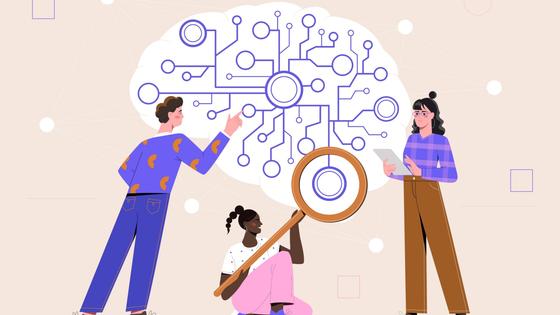
At that time, few people believed neural networks could take over the world. But now, this is what is happening - artificial intelligence is rapidly penetrating all spheres of human life. Due to the general hype around ChatGPT, Midjourney, Visper and other neural networks, many professions predict an imminent exodus. While artificial intelligence is taking jobs away from some professionals, it provides new career opportunities and prospects for others. Let's discuss how to use neural networks most effectively in professional activities to remain in-demand and indispensable specialists.
In Medicine

Artificial intelligence is actively implemented, first of all, in the field of healthcare. Analysts suggest that by 2030, the AI market in medicine will be valued at $194.5 billion, and the total market will reach a value of $1.8 trillion.
In most cases, neural networks are used to analyse the results of examinations, such as CT scans, X-ray and photofluorographic examinations, ultrasound diagnostics, etc. Recurrent Neural Networks (RNN) do this. They can detect various pathologies of the lungs, heart, and other organs. Of course, AI will not be able to replace doctors forever because each doctor's experience, unique skills, and ability to communicate with patients and show compassion are no less essential components of medical practice. Therefore, medical professionals need to improve their professional skills, and in our century, this also means mastering artificial intelligence systems for more rapid detection of pathologies and effective treatment of patients.
Neural networks, such as U-Net, can accurately visualise the body's internal structures and depict the functions of human organs and tissues. It makes it possible to improve diagnosis and increase disease detection because artificial intelligence, unlike even an experienced doctor, is unfamiliar with the problem of "losing one's touch". Here's an interesting story: Harvard University scientists once added an image of a gorilla to an X-ray image and showed it to doctors. Lo and behold, 83% of them failed to notice the ape on the human X-ray. The conclusions are left for you to trust AI or not.
Convolutional Neural Networks (CNNs) are usually used to analyse and process medical images. Often, they outperform doctors. For example, according to the study "Deep Learning Tool Tops Dermatologists in Melanoma Detection," professional dermatologists' accuracy of melanoma detection ranges from 65 to 85%. At the same time, CNNs trained with special programmes or libraries from TensorFlow, Scikit-learn and Keras provide an 87 to 95% accuracy. Therefore, most doctors in the world's leading clinics are paired with artificial intelligence, which helps them avoid errors and inaccuracies. AI also helps to reduce the examination time and start treatment sooner. For example, Chinese researchers have developed their neural network to analyse X-ray images to detect signs of COVID-19. They proved that AI saves about 40 per cent of doctors' time in diagnosing the virus, which allows them to start treatment sooner and increase survival rates.
Neural networks can also analyse data from patients' medical records and, under the guidance of a doctor, draw up a treatment plan, a scheme for taking certain medications, a set of exercises for recovery after surgery, and so on. Additionally, robotic surgery is now actively in development. But do not worry. It does not mean that robots independently perform operations. Of course, such devices with mechanical arms also allow you to perform surgical procedures at a high level. However, the most common use of AI is for modelling and planning the course of surgery and simplifying some of the surgeon's tasks. For example, cardiac surgeons get assisted by the HeartLander mini-robot. During surgery, it is inserted into a small incision in the chest for gentle catheter insertion and stable probing. Scientists have proven that using this robot reduces patient health damage. However, Heartlander is only involved in the work of a surgeon if open access directly to the heart is required.
Neural networks predict various viruses and infectious disease outbreaks. For this purpose, medical professionals, scientists, and researchers are using the BlueDot neural network, which first predicted an outbreak of Ebola back in 2014. In doing so, the AI surmised that the infection would spread outside of Africa.
Thus, neural networks are learning quickly and efficiently, improving their capabilities, and are increasingly implemented in healthcare. However, artificial intelligence is unlikely to surpass doctors on all criteria. In case doctors constantly improve and hone their skills as AI is actively developing, neural networks will remain the good assistants that will help to avoid mistakes, improve the quality of treatment, and reduce morbidity and even mortality.
In Finance and Analytics
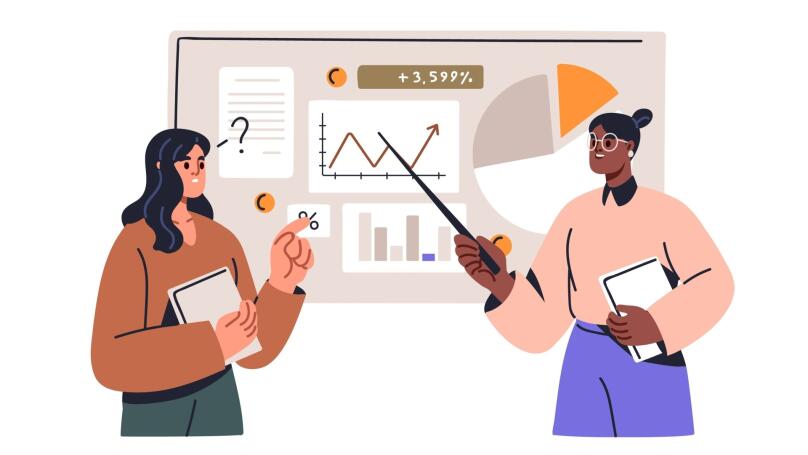
As mentioned, the total artificial intelligence market will reach $1.8 trillion by 2030. This prediction is the clearest example of how neural networks get used in finance and analytics. We are used to financing being primarily about money. However, it is also complex calculations, risk-related evaluations, probability theory and other hard-to-predict phenomena.
For example, AI has been implemented everywhere by various banking systems. At the same time, it is impossible to say which neural network they use, as each bank develops its artificial intelligence model, which must meet the requirements. Back in 2020, the American company Mastercard developed the Brighterion system. It is a unique neural network that conducts a complete analysis of information about customers' transactions, payments, and purchases and allows them to identify their purchasing habits, behavioural characteristics, needs, and interests. A specialist with this information suggests favourable and most suitable customer offers, improving customer service and loyalty. AI is also used to analyse customers' credit history to reduce the time it takes to decide whether to grant or deny a loan. In addition, neural networks can detect suspicious activity and prevent fraudulent activities by analysing customer behaviour, transactions, and other activities in the banking system.
Neural networks also help investors choose the safest and most profitable assets, considering potential profits, probable risks, liquidity, and many other indicators. For example, the Finprophet system can optimise investments and manage risks. It can predict changes in shares of various companies, futures, currencies, and investment fund indices on the largest financial markets. Moreover, the Tableau neural network will help analysts to bring all available data into a single form. The Tableau AI system independently creates interactive boards, graphs, charts, and maps to systematise the material. Tableau can also draft reports based on the input information and create graphs, which can be very useful in the professional activities of economists, financiers, and analysts. Of course, this will not replace their unique view of the processes taking place in the global financial sector. Still, neural networks can facilitate routine and monotonous work, such as writing reports.
In Marketing and PR

The most popular use case for AI in marketing is creating unique content. Neural networks can create descriptions of goods and services, product catalogues, and posts on social media. Therefore, most often, artificial intelligence systems are used to generate creatives. For example, if you have some crazy idea for a new product design but don't know how it will turn out and whether it is worth spending time and energy on it, ask Midjourney, Stable Diffusion, and 24AI neural networks to do it. Nutella, for example, has used AI to develop several million customised designs for its product. The brand managed to surprise its audience and emphasise the uniqueness of the chocolate paste.
In addition, neural networks can create a lot of unique content in minimal time. Therefore, the same ChatGPT, Midjourney or Visper can help a marketer or SMM specialist to respond quickly to a newsbreak by creating relevant content under the guidance of a professional.
Marketers can also use neural networks during the launch of targeted advertising. In this case, AI studies and analyses user behaviour, which allows advertising tailored to their requests, needs, and interests. One of the most popular neural networks, ChatGPT, can also help marketers choose the most effective keywords and phrases for content.
Lesser-known neural networks, such as Analisa, can quickly help you conduct detailed social media analytics and identify user activity from all sides. For example, Analisa's AI system counts the number of views and other user actions, segments this audience by key criteria and offers recommendations on improving interaction with page visitors. At the same time, the AI can conduct the same research in the profile of a competing company, identifying its weaknesses and pain points.
The SAP AI system can create a more detailed business development plan. It can analyse the whole production chain of a company's goods - from the supply of raw materials and the beginning of manufacturing to marketing and sales. Based on this research, the neural network suggests ways to improve the efficiency and profitability of the business.
Lectera’s Online Courses by topic
Digital Marketer
The demand for marketers is only growing! Get in-demand skills right now.
In Journalism

Neural networks are unlikely to be able to replace correspondents, investigative journalists, and columnists. However, with the help of AI, you can simplify your work and make your material more interesting and relevant. For example, the BloombergGPT neural network can process financial news and predict specific events based on this analysis. The journalist can use this data at their discretion, for example, agree with it and publish it or try to challenge the neural network's opinion. Artificial intelligence capabilities also allow journalists to reduce the time spent writing press releases, notes, and reports. For example, Notion AI generates a response to a request, enabling you to refine the resulting text using inbuilt tools independently. Additionally, many journalists can benefit from the neural network DeepL, a translator that supports thirty-one languages and demonstrates the best results.
Neural networks also help journalists to collect and analyse large data sets from various sources. It allows them to identify specific trends among this information, discover hidden patterns, draw conclusions, and speculate on what will happen next - for example, the BERT system, which is also used for semantic analysis of artistic text. Moreover, neural networks such as ClaimBuster are excellent at fact-checking and validation, which helps ensure that journalists can provide highly accurate information.
Bloggers can also make their life easier with the help of neural networks. For example, the Vizard system independently reviews long videos and selects the most exciting moments to make a short clip. What's more, Vizard independently creates subtitles and video descriptions and generates clickbait titles.
Thus, artificial intelligence systems can provide vast opportunities to improve careers and open new perspectives in various professional fields, not just the ones we have listed today.
As we have already discovered, neural networks will save much of the time and resources you spend on routine and monotonous tasks, and you can safely transfer all this to AI. In addition, neural networks help in systematisation and analysis of big data, which allows you to draw the correct conclusions and make competent decisions. Furthermore, artificial intelligence will not cease to exist, so it is an additional incentive for ordinary people to constantly improve themselves and develop their skills to keep up with neural networks and remain in demand in today's digital world.
Share this with your friends via:
Latest News
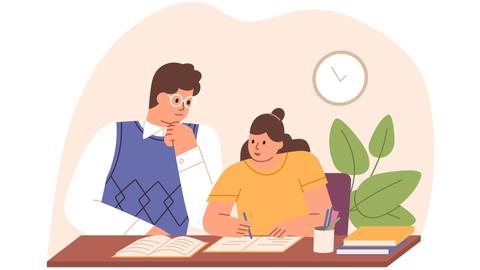
A significant stage in the development of the alternative education system has begun in West Northamptonshire in the UK: the County Council is actively calling on parents, guardians, and trustees to participate in shaping the future of this key area.

Outwoods Primary School in Atherstone, Warwickshire, having experienced deep sadness after the loss of their famous cat, Silla, has found solace in a new pet – a Maine Coon named Aloysius O’Hara.
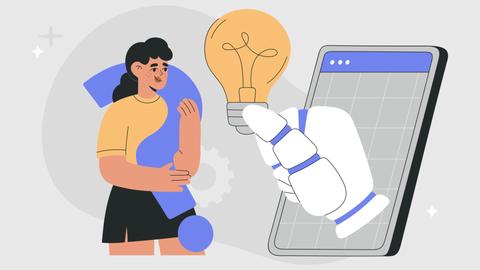
In modern universities, artificial intelligence, and in particular ChatGPT, is rapidly transforming from a controversial tool into a full-fledged student assistant.
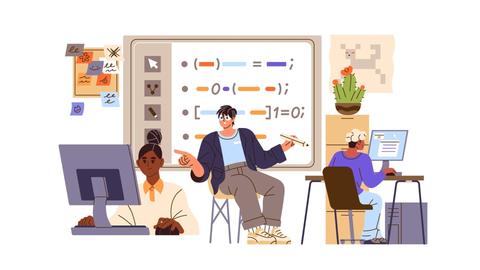
An innovative educational project is gaining momentum in UK primary schools, aiming to change attitudes towards video games.

The Massachusetts Institute of Technology (MIT) presents MIT Learn – a revolutionary online platform that opens a “new front door” to access university knowledge and resources.












 Life After the Holidays: How to Beat the Post-New Year Blues
Life After the Holidays: How to Beat the Post-New Year Blues
 Which Christmas Movie Character Are You?
Which Christmas Movie Character Are You?
 Your New Year’s Forecast: What Awaits You in the New Year?
Your New Year’s Forecast: What Awaits You in the New Year?
 Test. What Career Goal Should You Set for Next Year?
Test. What Career Goal Should You Set for Next Year?
 Test. Which New Year Archetype Are You?
Test. Which New Year Archetype Are You?
 Test. How Should You Spend the Winter Holidays?
Test. How Should You Spend the Winter Holidays?
